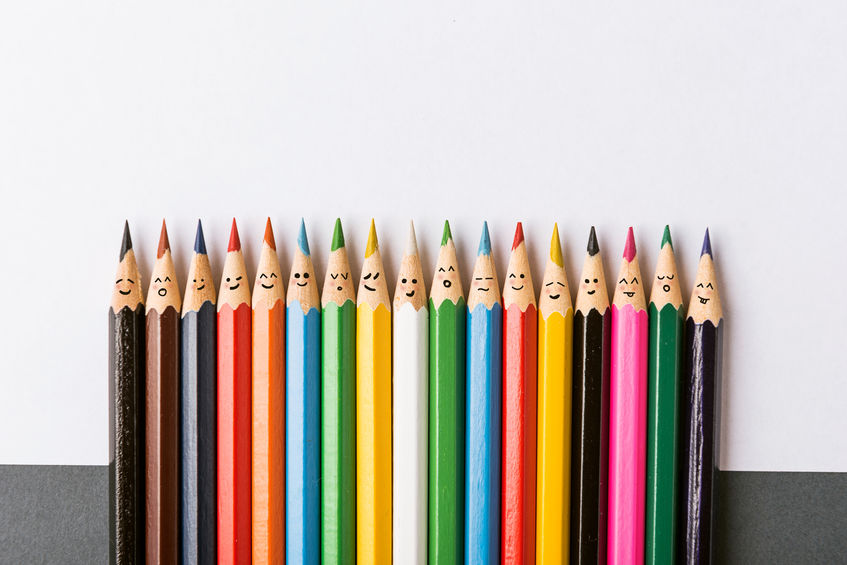By: Magda Vargas, SHRM-SCP, SPHR
Diversity is a fundamental characteristic of nature, a natural condition in the world we live in where the workplace is constantly attempting to adapt and match to the increasingly diverse environment to thus thrive as a business. Mary Frances Winters defines diversity as “Diversity is more than race. It includes age, gender, gender identity, background, religion, sexual orientation, and so on” and inclusion “the ability for individuals to bring their whole selves to work.” Great People Inside identified 12 main dimensions of Diversity & Inclusion in the Workforce. On this article we will talk about Flexibility. If you want to download the white paper on the 12 dimensions for more information, please click here.
Flexibility is the ability of reacting promptly and with agility to be able to adapt to different changes, personalities and working styles.
Why is flexibility important for a diverse and inclusive workforce?
In a new age of constantly evolving change we are becoming accustomed to the term of Diversity and Inclusion and its importance in the workplace. Change requires flexibility to adapt to it. This is why we consider that flexibility is one of the key elements of a diverse and inclusive workforce.
Diversity is something that in most workspaces already exists as we live in a diverse society. However, inclusiveness is something we don’t always find. Flexibility is directly linked to the concept of inclusion. Flexible individuals will more likely adapt to different people and accept their way of thinking, expressing and living.
What is the role of flexibility as part of Diversity and Inclusion?
Often times we tend to think that flexibility in the workforce is about the capacity of the employee to adapt to different schedules and tasks. However, flexibility goes beyond that and in this case is seen as a mindset and way of thinking that will make your workspace more inclusive.
With the the perception of diversity changing from race and sex to a way of thinking and lifestyle in younger generations, we found that employees need to be flexible to adapt to other ways of thinking.
Flexible employees and management will suffer less challenges when newer generations or different cultures join the workforce. When you have flexible mindset individuals driving initiatives at the core of your company, change will happen naturally and organically. Companies that don’t have a flexible leadership are more at risk of an internal crisis that can affect employer branding, productivity, attrition and even reputation as changes happen.
Do you know if your employees have a flexible mindset? Do you know if your managers do? Have you identified those workers that are more open and can impulse inclusivity within the subgroups of your organization? Great People Inside can easily help you identify this value and dimension within your company.
How does flexibility affect your workforce?
A flexible executive leadership team will understand the need of different work hours for different employees (mothers, caregivers…) and locations (example: working from home arrangements allows more people with certain disabilities to enter the workforce). The capacity to understand and adapt the workspace to different types of employees and their lifestyle and believes creates a more inclusive workforce.
How flexibility promotes creativity and productivity in the workplace
Employees appreciate managers who are flexible. Flexible managers provide feedback and create environments where employees feel more eager to grow, be creative and produce more. Flexibility relieves stress from the employee allowing them to feel comfortable, create a sense of belonging and maximize opportunities in their own way.
Flexible workspaces are places where the employee feels they can be their true self, speak freely, and therefore impulses their creativity. Flexible arrangements (example: working from home when a family member is sick or being able to leave early to pick up a kid) also give the employee peace of mind allowing them to concentrate on their job and produce more.
How can I know if my employees have a flexible mindset and how can I know if I have a flexible workspace that is inclusive?
Great People Inside has over 129 dimensions that the organizations can use to create and customize different assessments with the objective to focus on measuring and predicting behavioral categories in the workplace. Flexibility is one of 12 dimensions that were chosen as dimensions that closely matched Diversity and Inclusion culture by combating unconscious bias in the workplace and focusing on positive thinking to create a diverse workforce.
Our assessments are a scientific way to understand the qualities of your workforce and give you the opportunity to easily and successfully identify the characteristics and values within those dimensions that affect your workforce. If you are interested in learning more or trying us for free, please contact us through this Link, email magda@magdavargas.com or feel free to call/text 787-223-4088.

